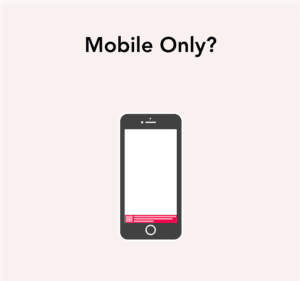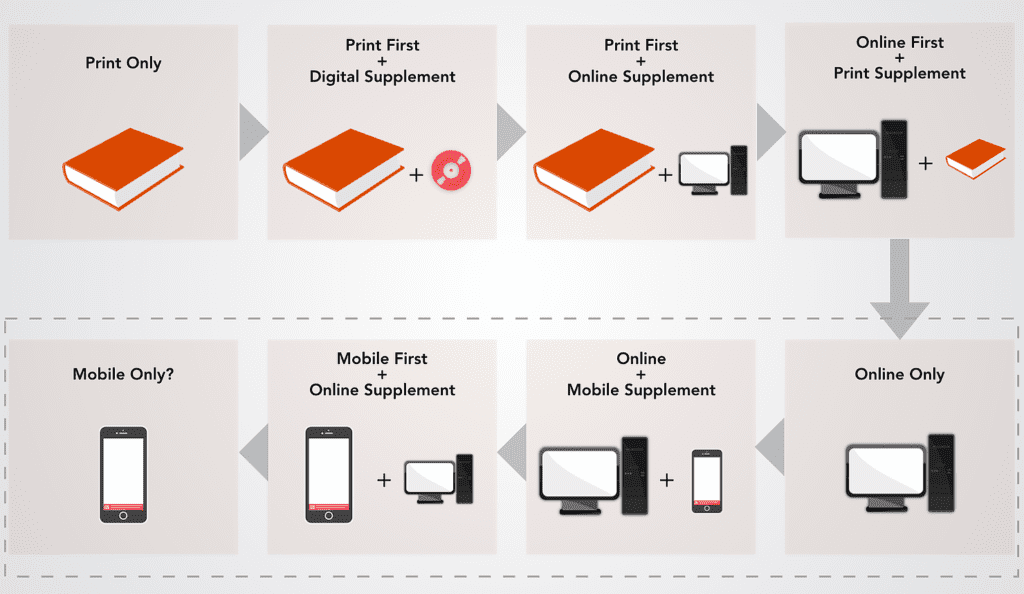
Since the Smartphones and Internet have taken over the world (and all our lives), the way we consume content has significantly changed. Being in the education industry for over a decade, my team and I have had the unique opportunity to closely observe and study how the way we deliver and consume Educational Content has evolved over the last few years.

For a long time, Books (Print Media in general) were the only source of knowledge. Knowledge seekers would spend hours in the libraries reading books, magazines, articles, journals educating themselves in their areas of interest
With the advent of the Personal Computer, education companies saw the need to open up a second channel – a digital channel. We started seeing CD’s and DVDs packed at the very end of the books. While the book was still the primary product here, the CDs or DVDs would often contain supplementary content such as video snippets, additional quizzes etc.rnals educating themselves in their areas of interest


As Internet became popular, CDs and DVDs slowly faded away, and were replaced with an “Online Access Code” that users could redeem to access content online. It was basically the same content as in the CDs or DVDs, but available online, so that the content could be updated regularly without having the ship a whole new CD or DVD again.
With the Internet becoming a ubiquity in most parts of the world, people are starting to prefer online content over print media. Most of us today read our morning news online, access digital version of our favorite magazines, buy and access e-books instead of printed books. Education companies are being forced to flip their business models. The Online Product is now becoming now the primary product, and printed books for the first time, are seen as a supplementary offering.


With more and more people preferring online learning products over books, many education companies are being forced to roll out their first set of “Online Only” products, which do not come with any print offering! Publishing companies that traditionally printed books are focussed on building digital online products and creating digital learning experiences!
The advent of the “Smart Phone” has opened up yet another digital channel that can be used to engage learners beyond the online experience, with supplementary quizzes, extended reading, video snippets that could be consumed anytime anywhere on personal devices. Learners typically get free access to the mobile content along with their online product purchase.


Within the increasing popularity and growing adoption of the smartphones, we will soon be seeing many “Mobile First” products that would be targeted to the growing population of smartphone users. All the traditional online content will now have to be tweaked to work responsively on mobile or completely re-designed for a Mobile First experience.

The Smartphone today is arguably the Most Natural Way for all of us to consume digital content. It’s a very personal device that lives in our pockets for most part of the day. We breath, eat, sleep with our smartphones next to us. Its an integral part of every individual today. If I want to learn about something, I do not run to the nearby library, I do not run to my desk to find my computer. All I do is reach out to my pocket and pull out my phone, and start swiping. I don’t even have to type in my question, I can just use my voice to get answers. The best part is, I can do it anywhere, anytime, on-the-go.
Smartphones are a strong digital channel that connects each and everyone of us to the world of internet. This is a channel that will be leveraged effectively for learning and education!
Very soon, we will be seeing an increasing number of smartphone based education products in the market, and this will only grow in the years to come!

![]() +91 7305680642
+91 7305680642
![]() +91 9551703301
+91 9551703301
![]() contactus@enhanzed.com
contactus@enhanzed.com